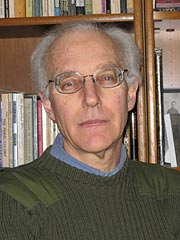Succession Stories

 In resigning from office last month, Archbishop Major Lubomyr Husar paved the way for a smooth and orderly succession. He thus dealt effectively with what has been a perennial problem, and not only in the Church.
In resigning from office last month, Archbishop Major Lubomyr Husar paved the way for a smooth and orderly succession. He thus dealt effectively with what has been a perennial problem, and not only in the Church.
Over the ages, different mechanisms have been devised to deal with the issue of how to peacefully replace one leader with another. The problem has two parts: what event should trigger the succession, and how the successor is to be chosen. In monarchical systems, the triggering event is normally the death of the sovereign. Traditionally, the monarch's eldest son succeeds him. But what if the monarch has no male heirs? Henry VIII's obsession with producing a son, which distorted his policies and helped ruin what might have been a glorious reign, is well known. Expanding the succession to include daughters has been a wise expedient, resulting in some very capable rule by women like England's Queen Elizabeth, the Austrian Empress Maria Theresa, and Britain's Queen Victoria.
Nevertheless, primogeniture is a risky principle. Sons of great men rarely measure up to their fathers. And how does one deal with the monarch's surviving brothers or nephews, should they aspire to the throne? The problem becomes more complicated in a loose confederation of principalities, where multiple successions can take place within a generation. In eleventh-century Kyivan Rus', the successors of Yaroslav the Wise devised a system, based on his testament, to deal with this problem. Vacancies in the principal princely thrones would be filled, in order of importance, by the siblings of a deceased Kyivan prince in order of seniority. This system proved too complex and unwieldy, however, as impatient princelings broke the rules and vied for power. It was abandoned by the end of the century in favor of direct father-son succession.
Another approach to the problem of succession is to abolish the inheritable throne and elect each successive ruler. This was the rule in Poland-Lithuania. The break between reigns could, however, be chaotic. The Habsburgs tried electing their new ruler while the incumbent was still alive. This could ensure a smooth succession. But Poland rejected this method. As a result, the nobility could dictate terms to the newly elected king. This resulted in a weak monarchy – more democratic, perhaps, but unstable and open to intrigue.
In the Roman Catholic Church, the death of a pope is followed by a secret conclave in which the cardinals elect a successor. There has been only one case of a pope resigning. A peasants' son beloved by the common people, the saintly hermit Pietro del Morrone was elected pope in July 1294 at the age of eighty-five, taking the name Celestine V. Proving confused and incompetent as an administrator, within a few months he decided to abdicate, and consulted the astute canonist Cardinal Benedetto Caetani. The cardinal prepared Celestine's abdication in December 1294 and proceeded to be elected as his successor, taking the name of Boniface VIII. Their contemporary Dante Alighieri had no sympathy for either man, portraying Celestine (without actually naming him) in the "Inferno" as more a coward than a saint for having made "the great refusal." He placed him among the "neutrals," "who lived without disgrace and without praise" (Inferno, Canto III, lines 36 and 60). The affair is recounted in Ignazio Silone's 1968 novel "The Story of a Humble Christian," dramatized the following year.
It may be that the octogenarian Pope Celestine suffered from dementia (he would sometimes assign the same benefice to more than one person). That would have been sufficient cause for resignation. But what if a leader who has become incapable of fulfilling his duties refuses to resign? Some years ago the sad case of a senile but obdurate California Supreme Court justice raised calls for mandatory retirement of justices at a certain age. That, however, would deprive the courts and the people of some very talented judges, and cut short flourishing careers. After all, some individuals function perfectly well into their eighties, while others are ready to retire at sixty. Mandatory retirement for judges was never enacted in California, though it is the rule in some states. It has also been the rule in many universities (I attended a law school which employed some brilliant professors who had fallen victim to their universities' mandatory retirement rule, and were known collectively as "the Sixty-five Club"). A creative solution to the problem was devised for U.S. federal judges, who are subject to a schedule of duties which gradually diminishes with their age.
The Roman Catholic Church requests bishops to resign at the age of seventy-five, but this does not apply to patriarchs or major archbishops. Fortunately, the Church is usually able to function even if a leader suffers from poor health. Cardinal Husar himself has noted that he had witnessed the last years of Major Archbishops Josyf Cardinal Slipyj, who died at the age of 92, and Myroslav Ivan Cardinal Lubachivsky, who passed away at 86; neither of them resigned. It may well be that something like the rule for U.S. federal judges described above is informally practiced: as a leader begins to lose his faculties, his associates gradually take over his various functions. Major Archbishop Husar, however, has judged that it would be better to hand over the leadership of his Church now to a younger and healthier man.
Not surprisingly, there were rumors that this resignation was due to political pressure, whether from Rome or from Kyiv. There is no evidence of this. There is, however, a precedent. That is the case of the Metropolitan of Lviv and Halych Iosyf Sembratovych (1821-1900), nominated in 1870. When under the influence of a Russophile priest the villagers of Hnylychky in Galicia's Zbarazh district announced that they were converting to Russian Orthodoxy, Metropolitan Iosyf was accused of having failed to stop the growing Russophile movement among his clergy. According to some sources, Polish intrigues as well as the opposition of the government in Vienna contributed to his forced resignation in 1882. Sylvester Sembratovych (1836-1898) was appointed administrator late that year and succeeded him as metropolitan in 1885.
We can be grateful that the tenure of Major Archbishop Husar has ended more happily than that of Pope Celestine V or Metropolitan Iosyf Sembratovych. Indeed, he will remain a spiritual leader, talking with youth and students, and advising the ordinary believer through his audio lectures. An orderly succession will surely be counted among his successes.










